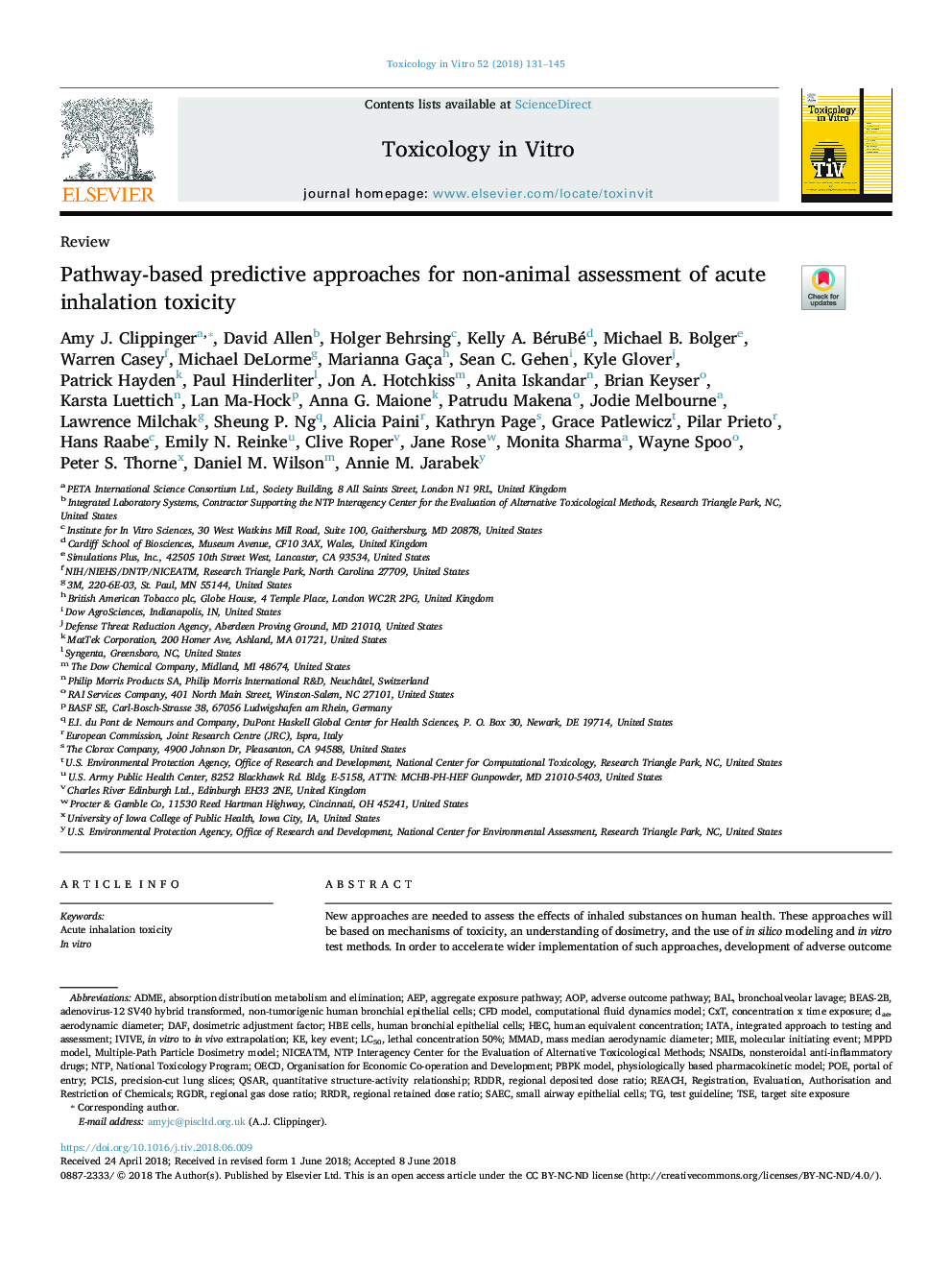| Article ID | Journal | Published Year | Pages | File Type |
|---|---|---|---|---|
| 8553823 | Toxicology in Vitro | 2018 | 15 Pages |
Abstract
New approaches are needed to assess the effects of inhaled substances on human health. These approaches will be based on mechanisms of toxicity, an understanding of dosimetry, and the use of in silico modeling and in vitro test methods. In order to accelerate wider implementation of such approaches, development of adverse outcome pathways (AOPs) can help identify and address gaps in our understanding of relevant parameters for model input and mechanisms, and optimize non-animal approaches that can be used to investigate key events of toxicity. This paper describes the AOPs and the toolbox of in vitro and in silico models that can be used to assess the key events leading to toxicity following inhalation exposure. Because the optimal testing strategy will vary depending on the substance of interest, here we present a decision tree approach to identify an appropriate non-animal integrated testing strategy that incorporates consideration of a substance's physicochemical properties, relevant mechanisms of toxicity, and available in silico models and in vitro test methods. This decision tree can facilitate standardization of the testing approaches. Case study examples are presented to provide a basis for proof-of-concept testing to illustrate the utility of non-animal approaches to inform hazard identification and risk assessment of humans exposed to inhaled substances.
Keywords
Quantitative structure-activity relationships (QSAR)NICEATMSAECIVIVEPCLSBEAS-2BPOEMIETSEHECBALOECDLC50DAFNSAIDSADMEMMADAOPAEPNTPEx vivoRisk assessmentPrecision-cut lung slicesNational Toxicology ProgramQSARRegistration, Evaluation, Authorisation and Restriction of ChemicalsNonsteroidal anti-inflammatory drugsIn silicoIn vitroDosimetrytest guidelineDaeQuantitative structure-activity relationshipREACHmolecular initiating eventKey eventOrganisation for Economic Co-operation and DevelopmentSmall airway epithelial cellsHuman bronchial epithelial cellslethal concentration 50%Aerodynamic diameterMass median aerodynamic diameterbronchoalveolar lavageCFD modelPBPK modelComputational fluid dynamics modelPhysiologically based pharmacokinetic modelAcute inhalation toxicityadverse outcome pathwayportal of entryIATA
Related Topics
Life Sciences
Environmental Science
Health, Toxicology and Mutagenesis
Authors
Amy J. Clippinger, David Allen, Holger Behrsing, Kelly A. BéruBé, Michael B. Bolger, Warren Casey, Michael DeLorme, Marianna Gaça, Sean C. Gehen, Kyle Glover, Patrick Hayden, Paul Hinderliter, Jon A. Hotchkiss, Anita Iskandar, Brian Keyser,
